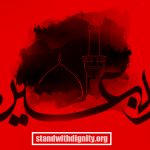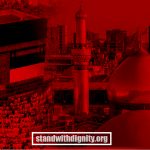The world’s largest annual pilgrimage is not one of celebration, nor is it a gathering of happiness. Attracting record numbers year after year, the world’s largest annual gathering is known as Arba’een.
Literally meaning “forty”, Arba’een marks the forty-day mourning period of Imam Hussain, Prophet Muhammad’s grandson, after he was killed on Ashura in Karbala, Iraq. Following his death by the army of Yazid, Hussain’s decapitated head, along with the heads of the soldiers who died alongside him, were pushed onto a spike and marched through the cities. His family, forced into chains at the hands and feet, marched behind him. The fortieth day marks the time his family and his head returned to Karbala, where his head was properly buried alongside his body.
For nearly 30 years under Saddam’s regime, it was forbidden to mark Arba’een publicly in Iraq. To Shia Muslims, and even some Sunnis, Christians, Jews, and Zoroastrians, the pilgrimage of Arba’een was and is a dream that can finally be fulfilled.
The people of Iraqi travel from the farthest cities, some even walking 400 km, until they reach Imam Hussain. Most foreign Arba’een pilgrims begin their journey in Najaf, Iraq, where the shrine of Imam Ali, the father of Imam Hussain and son-in-law of the prophet, is located. From there, millions will walk through desert roads, sometimes without rest, until they mark the 80 km to the city of Karbala, Iraq.
Throughout the journey, the roads are packed with Iraqi citizens offering food, water, a warm bed, or kind words of motivation. Stations and tents are set up where the orphans of Iraq help serve food, volunteer doctors treat travel wounds and illnesses, and old men offer chairs, coffee, and conversation.
When asked, all the volunteers will say the same thing, they are “servants of Imam Hussain and worshippers of Allah”. They will stay up day and night, cooking, cleaning, feeding, and tending to people in the name of Imam Hussein and the 72 martyrs who were killed on the hot sands of Karbala.
After roughly three days of walking, pilgrims will reach Karbala where they pay their respects to Imam Hussain and his brother. Carpets are rolled out for everyone to make their entrance, sleep is forgotten, and cultures are merged for one cause, the remembrance of Hussain and the fight for justice. Mostly, it is a journey where one ends up dressed in black, clutching the cage of Hussain, crying their prayers, sorrows, and hopes for forgiveness. Arba’een is not just a journey for commemorating the death of Hussain, but a journey for the soul that needs to be put at ease. Why else would millions of people, some carrying mothers on their backs, others with infant children, make the long, tiring journey through the desert cities of Iraq?











